We stop off for some sightseeing at Murphy’s Haystack and Ted observes the vast expanses of this land from the comfort of Chewie’s backpack. “She’s dragged me everywhere, since that Xmas when she first grabbed my ear and dragged me towards her. Now he’s doing it too. Although I must say, this is pretty good stuff.”
 Ted gets to ‘walkabout’
Ted gets to ‘walkabout’ Relaxing at Murphy’s Haystacks
Relaxing at Murphy’s Haystacks Murphy's Haystacks
Murphy's Haystacks

Murphy’s Haystacks
Point Labatt Conservation Park is definitely worth a looksie. (‘Looksie’ is from the phrase: ‘Look. See?’) From the lookout on the cliffs, high above the beach, a sea-lion breeding colony relaxes in the afternoon sun. A young pup calls out to mum. A bull rolls over lazily on the flat rocks, while sharks lurk out in the ocean.
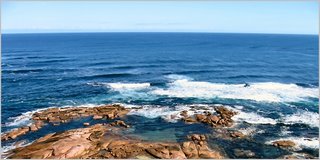 Point Labatt Sea Lion colony with a view over the Southern Ocean
Point Labatt Sea Lion colony with a view over the Southern Ocean Sea Lion siesta
Sea Lion siesta No human footprints on this beach
No human footprints on this beachOsca : This park and aquatic reserve protects a special colony of Australia’s only endemic pinniped (seals and their relatives), as this is the only site where the Australian sea-lion breeds on the mainland. These sea-lions are Australia’s most endangered marine mammal and one of the rarest pinnipeds in the world.
Point Labatt was dedicated as a reserve in 1973 as a result of the concerns of the owners, Ellen, Myra and Ron Freeman, that illegal shooting was threatening these endangered mammals. They donated the land to the South Australian National Parks and Wildlife Service so that the seal-lions could be better protected.
Eve : Cotton wool ball clouds glide over the horizon. The sand dunes atop the coastal cliff are behind us. The vegetation changes. The sun beats down, drying off yesterday evening’s drizzle.
On a gravel, unsealed, road the conditions are always changing. Here it is like it was corrugated iron, where the dips and grooves form as vehicles drive along them, weathering them down into this corrugated pattern. Let’s just say it’s quite bumpy, at any speed. (Out here Chewie averages anywhere between 10 km p/h and 50 km p/h. He stops quite frequently.)
 More like 10km per hour along THIS STUFF
More like 10km per hour along THIS STUFFAs Chewie walks off into the distance to capute yet another perfect shot, those cotton wool ball clouds gather and reflect in the calm waters of the bay. “Tidyoo, tiddy – yoo. Eet, tee tee, eet.” Or ‘chirp, chirp’, for clarity.
 ‘Cotton wool ball clouds glide over the horizon’
‘Cotton wool ball clouds glide over the horizon’Scattered windmills grace the landscape. This time sand dunes supply the backdrop.
 A scattered windmill
A scattered windmill ‘Sky, horizon, beach, horizon…’
‘Sky, horizon, beach, horizon…’We arrive in Ceduna at the end of the day and settle in one of the many caravan parks for the night. In the morning Chewie has a long hot bath, which releases his tense shoulders and neck. He caught a chill the other evening and the driving and holding camera steady and updating blog and sleeping in a smaller than usual space, has given him a ‘pain in the neck’.
 Sunset over Murat Bay
Sunset over Murat Bay Osca : Set on the shore of Murat Bay, Ceduna, with a population of just over 3,800 is the westernmost town of any size in South Australia. The name Ceduna is a derivative of an Aboriginal word “Chedoona” meaning “a resting place”. It is a fitting name as it is the ideal place to finalise preparation for the journey across the Nullabor to Perth (some 2,000km).
Ceduna was proclaimed a town in 1896. It’s original name Murat Bay was given by a French explorer Nicholas Baudin, in 1802. The original settlement was at Denial Bay, about 10km west of the present Ceduna. Provisions for the early pioneers were unloaded from ships anchored just off shore and brought onland in wagons at low tide. For some time, the Denial Bay pier was the second longest in South Australia.
Eve : In the bright morning 47 carriages, carrying gypsum (used to break up clay into soil), clattered past along the railroad track. “How’s the ticker mate?” the engineer joked in a typical ausiie larikan way, having just scared the heck out of Chewie, making him jump, as he blew his engine horn.
 “How’s the ticker mate?”
“How’s the ticker mate?”As we drive into the center of the town we have our first sighting of aboriginal people.
Ceduna seems a sad place. The people do not seem as open and friendly as in Coffin Bay. I’m not sure why as yet.
But just on the other side of the small bay lies Denial Bay. A brightly coloured playground and a long jetty (once the second longest in South Australia) greet us. I see pairs again.

View from Denial Bay

 Small stone church
Small stone church Windmill sunset
Windmill sunset 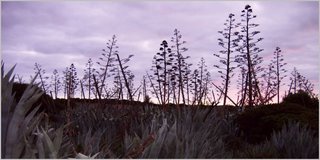 Giant cacti jut out against the twilight sky.
Giant cacti jut out against the twilight sky.




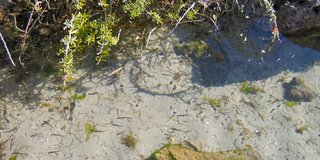
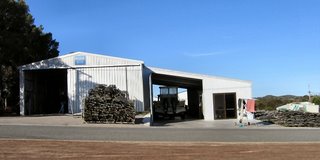

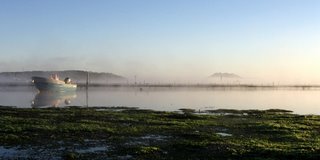







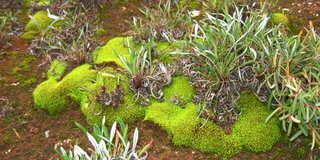
 Rugged coastline.
Rugged coastline.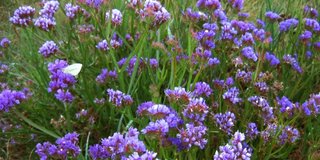

 ... sure is.
... sure is.




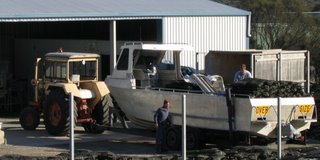
 Some oysters are still sorted by hand.
Some oysters are still sorted by hand.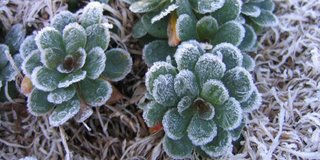 Frost paints the leaves white.
Frost paints the leaves white.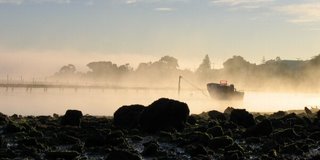 Morning fog rolls into the bay.
Morning fog rolls into the bay.
